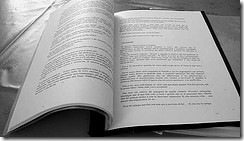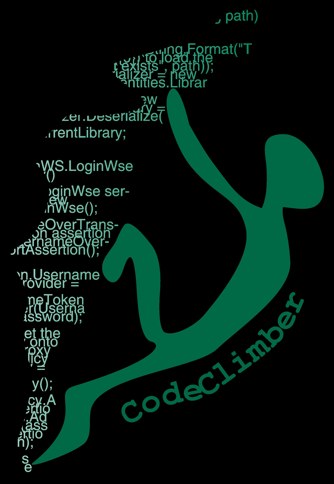 As some of you might already know, in July I started writing a book for Wrox. It was a completely new experience for me, and I’ve to thank Keyvan and the guys at Wrox for helping me in understanding the book writing process.
As some of you might already know, in July I started writing a book for Wrox. It was a completely new experience for me, and I’ve to thank Keyvan and the guys at Wrox for helping me in understanding the book writing process.
During these months I received lots of question on this process from people that never wrote a book, but also from people that wrote a book in Italy: all asking how it is to write a book and how much I’m paid for the book. So here I’m, writing a blog post to answer all the questions
Book writing process
Writing a book can be seen as a 4 phases process:
- Book proposal;
- Writing phase;
- Author review
- Production.
Let’s see each of the phase in details.
Book Proposal
If you want to write a book, that’s the first step you have to take: the book proposal.
The proposal is all you are allowed to send to the book publisher in order to persuade him that your idea is great, and that you book will make them earn money.
The proposal can be around 10-15 pages long and must include information on the topic you want to cover, the target readership, the other books that are being written on the topic by other publisher, and the biography and previous writing experience of the author. Then a proposed table of contents must be included in the book proposal as well.
Actual book writing phase
Once the proposal has been approved, and the contracts signed, the real book writing phase begins. It’s the longest phase of the whole process, but probably the less complex.
At this point a new figure enters the scene: the Development Editor (DE). He/she is a mix between a project manager and a book editor.
With him the deadlines are established: usually the writing timeframe is divided in 4 dates (in our book this phase lasted 4 months, so one deadline per month, but with single authors or longer books this phase could last also 6-8 months, so one deadline every 1,5-2 months).
And now the fun begins. For each chapter there are 3 steps:
- Chapter is written by author and submitted to the DE
- The DE “develops” the contents (makes changes to sentences, fix the text formatting, change titles of paragraphs and so on)
- The content is reviewed by the Tech Editor
The Tech Editor (TE) is an external person, usually an expert in the matter of the book, that verifies the contents is correct and that it’s easy to understand, and nothing important has been forgotten.
When all chapters have been completed by the author the Author Review (AR) phase starts.
Author Review
In this phase the author addresses all the issues raised by the DE and TEs during their review. This usually results in the chapters being changed, new contents added. And in book on a beta technology like ours, changes are incorporated as well (the first chapters have been written based on P4, and now they need to be changed, also adding new concepts, to be in-line with the latest version).
At this point the chapters are marked as Final.
Production
The DE does the final cleaning on the chapters and then it’s sent to the Production department:
- it’s copyedited (figures are cropped and diagrams are redrawn in house)
- it’s proofed
- it’s indexed
Then the books goes to layout. And this is the last time the authors are going to review the book before it goes to print.
And after it’s printed, the books are shipped and 3-4 weeks later it’s on the shelves.
Writing Revenues
Another question I always get is: how do they pay you? Actually this is asked more then the one about the writing process.
Obviously I’m not going to tell you my figures, but I’ll tell you how payment is distributed, at least at Wrox.
The payment is divided in two: one amount for the initial book writing and then the sales’ royalties.
At Wrox they pay you 1/3 of the initial amount when you sign the contract, 1/3 when you reach the 50% deadline (half of the chapters submitted) and the last 1/3 when you reach the 100% deadline (all contents submitted, at the beginning of the AR phase). This amount depends on how much they expect to book to sell, the skills of the author and how many book you already wrote. Then, when the book is published, you start earning revenues on the sales. The first amount actually is an anticipation on the revenues, so you start getting more money when the sales are enough to cover this amount.
Imagine you are given 1000 as first part of the payment, the book costs 10 and you have 10% revenue on the sales: you get 1000 upfront, so the book has to be sold in 1000 copies before this advance is covered and you start getting the rest of the revenues.
How this all compares to Italy
This is a kind of heaven compared to Italian book writing: the people I spoke to told me that in Italy there are no such things as the TE, copyeditor, proofreader. There is only a kind of DE that connects the author to the publisher. And the payment is only based on revenues paid after the book is sold.
And the things get even worse with smaller publishers, that ask you to pay part of the cost of the production of the book.
And what about me?
To all the people that asked my personal experience writing the book and how I managed to be a book writer, a consultant, a husband, an opensource developer, a community speaker and an outdoor-loving guy I’m going to answer in a future post. If you want to get it straight to your newsreader, subscribe to the blog feed.
UPDATE: The followup is available here: My Personal Experience Writing the Book
[Photo on top by Lo83, on Flickr: I’ve Started to Write a book]

